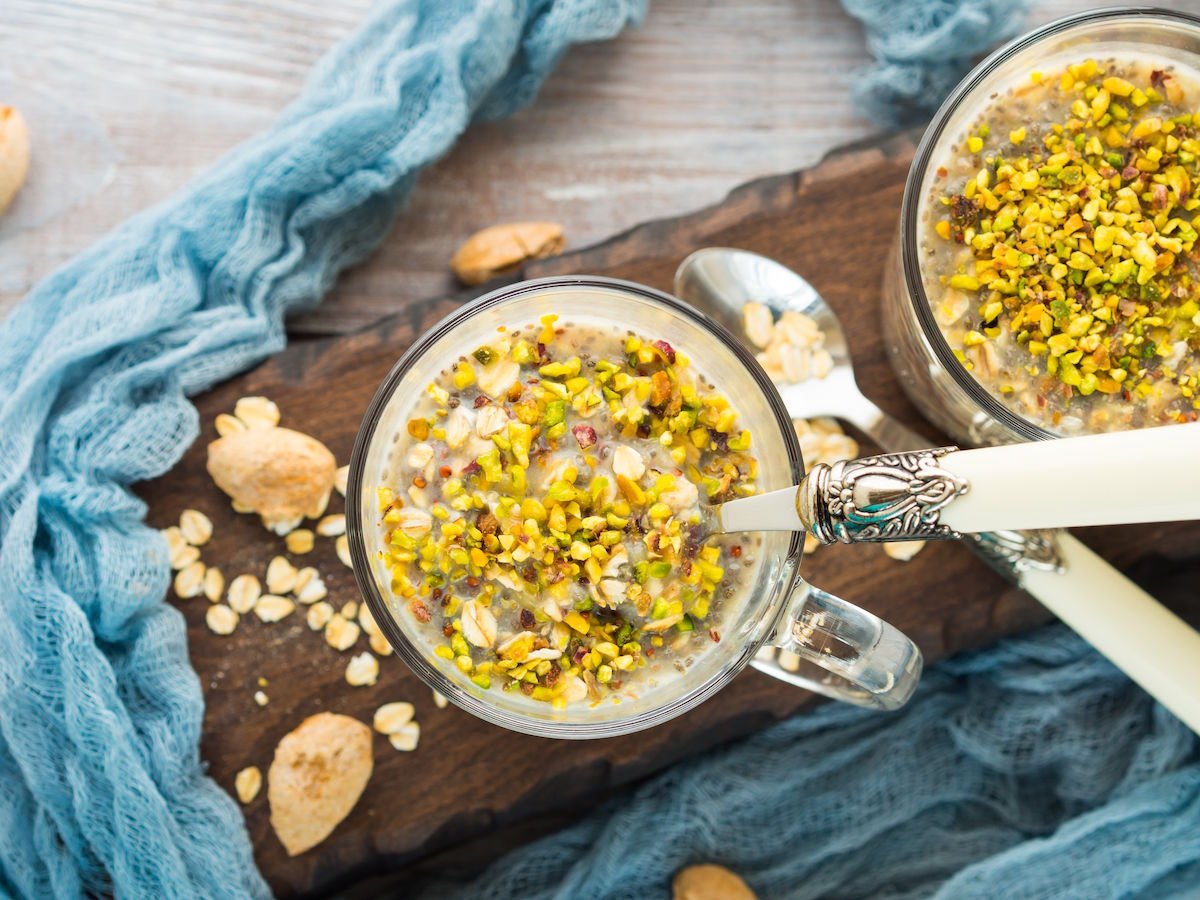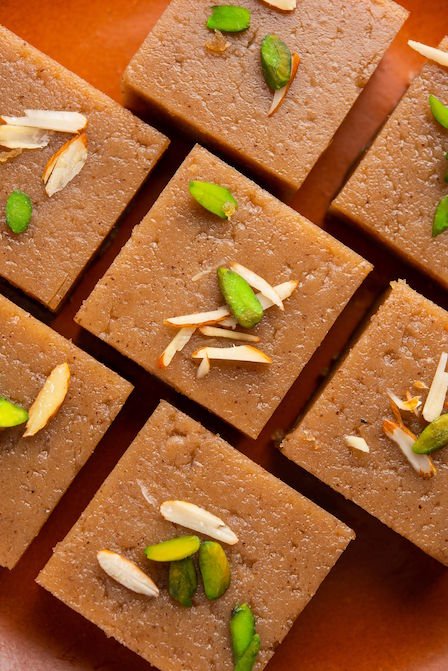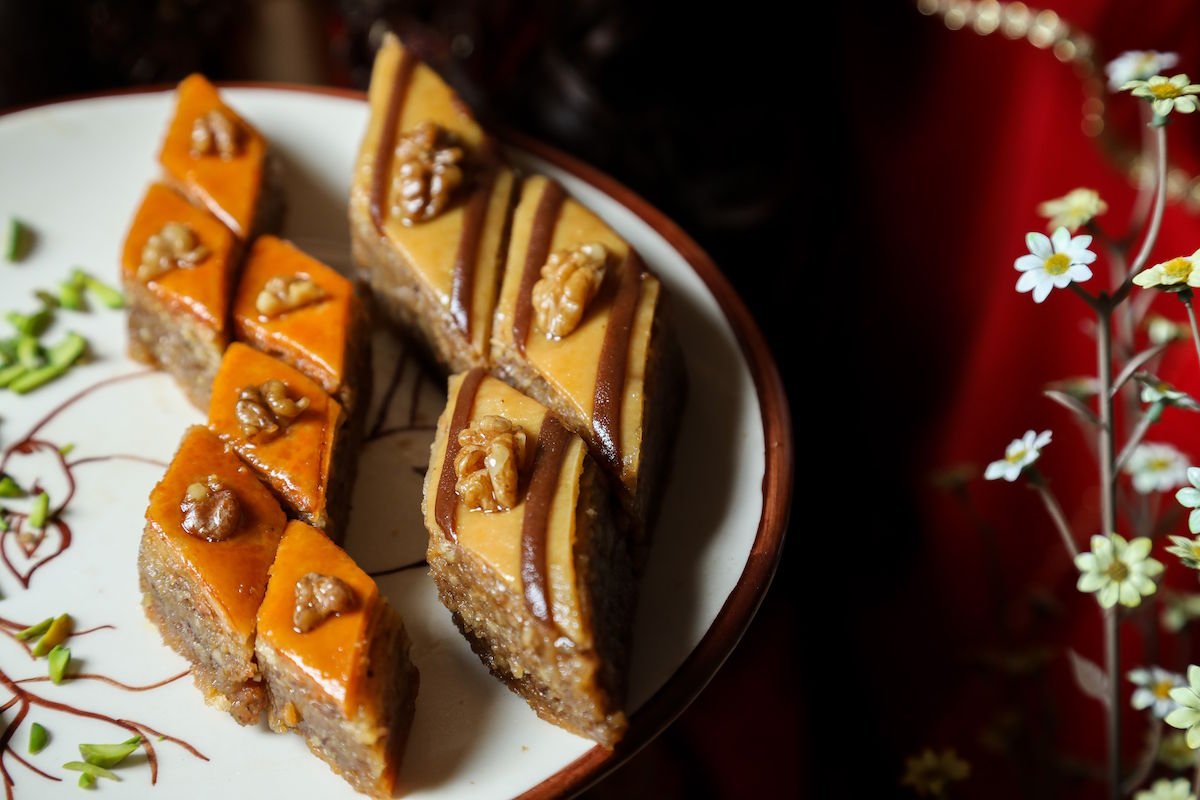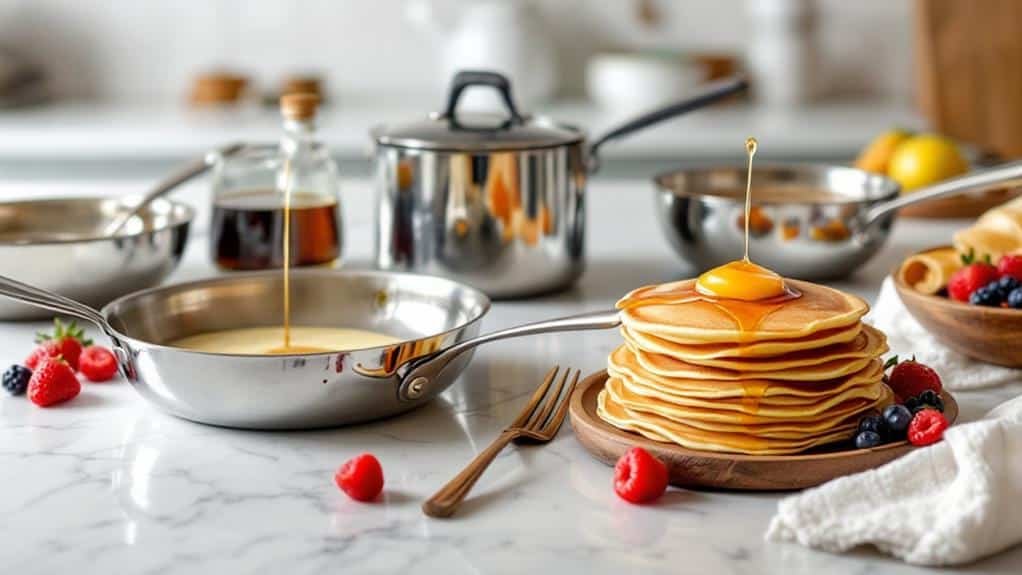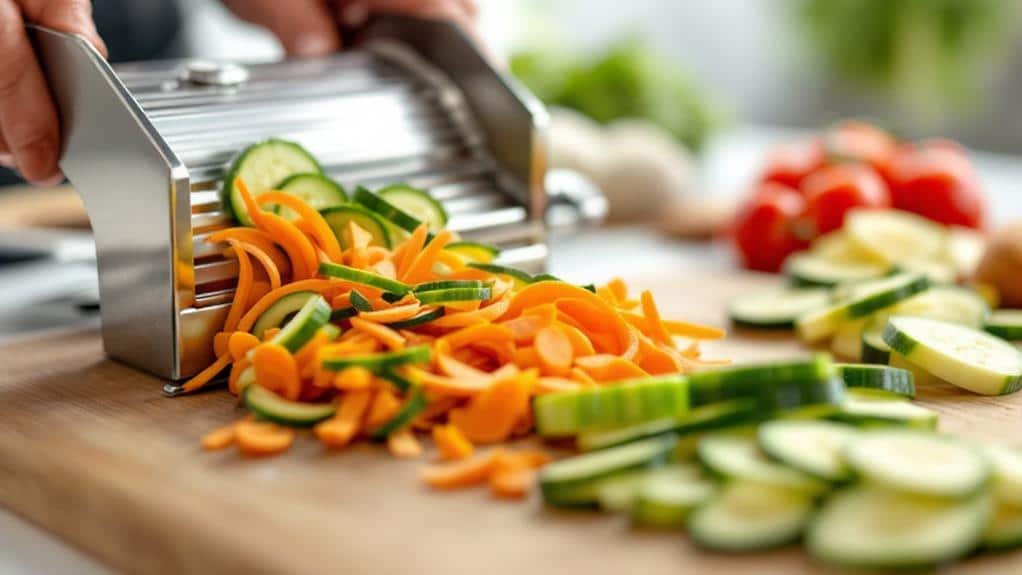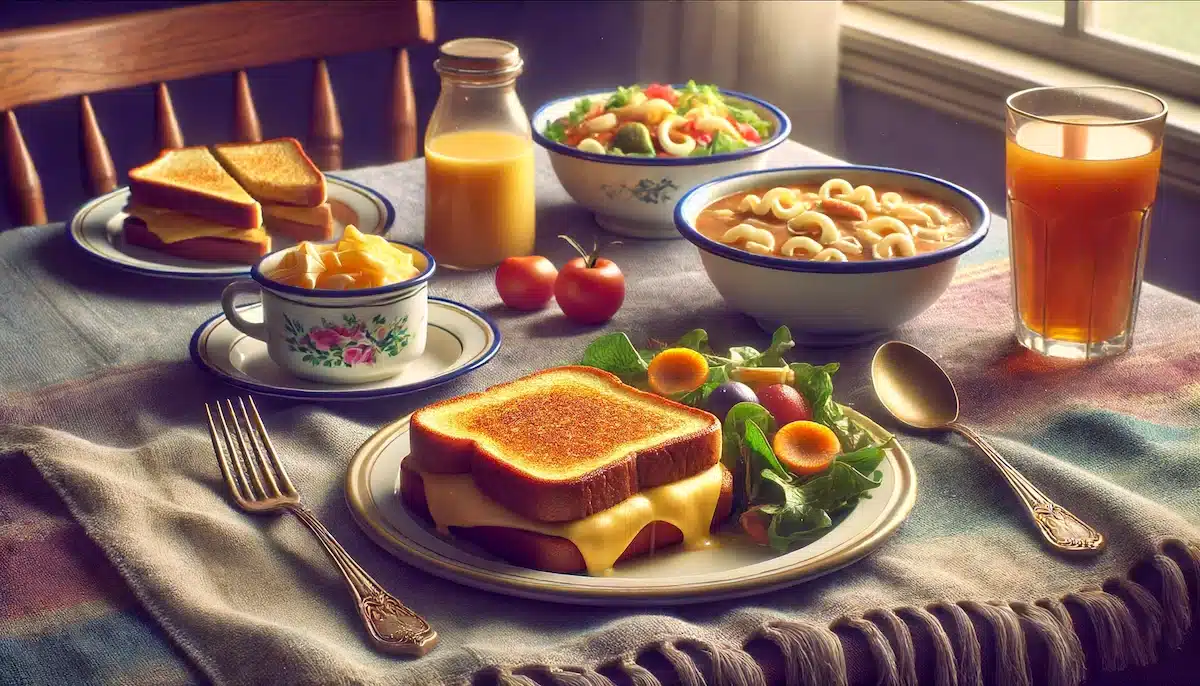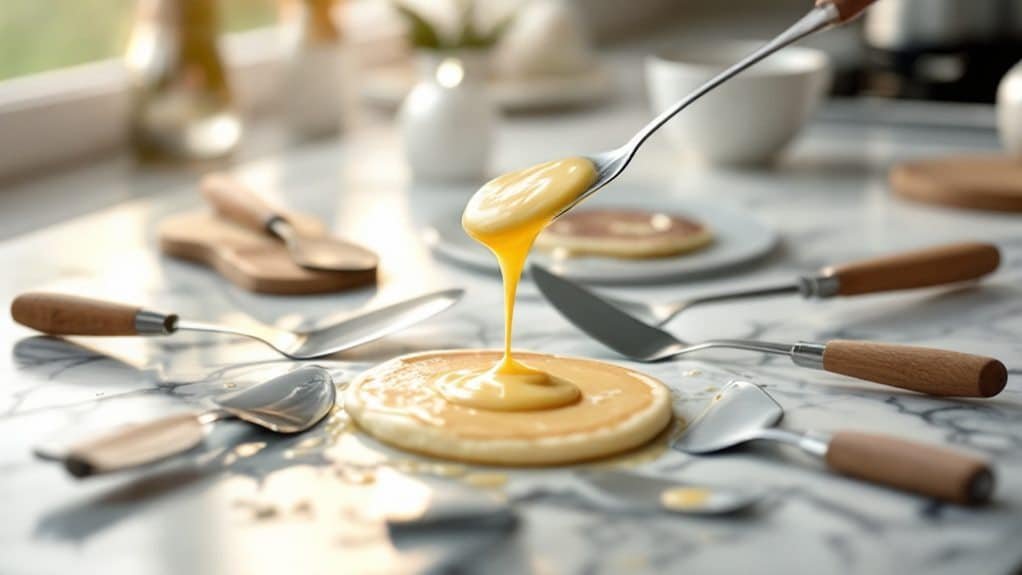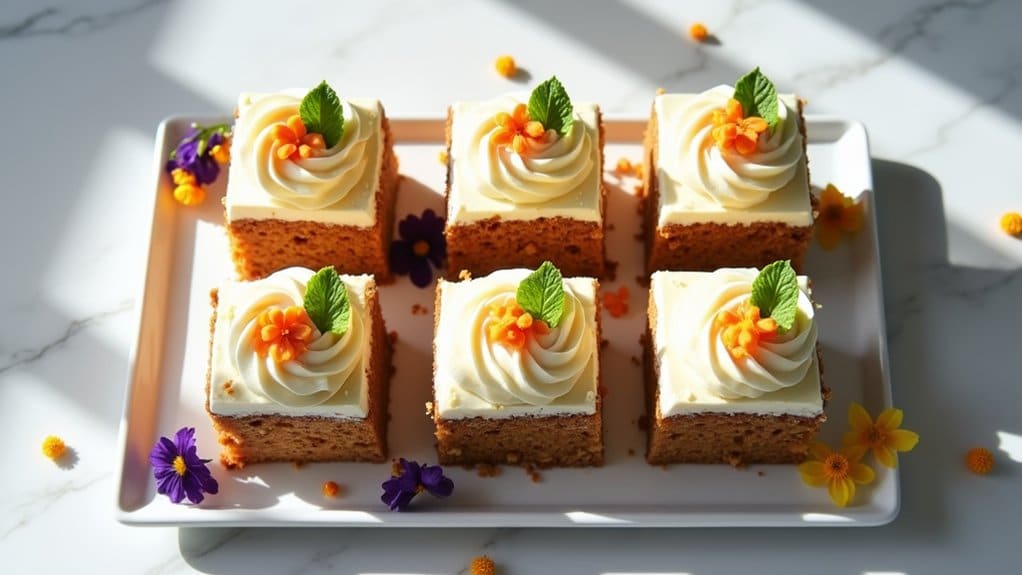Have you ever stared longingly at a platter of mithai (that’s the fancy name for Indian sweets) at a party and wished you could just dive in? Traditional Indian desserts are legendary for their rich, sweet flavours. Still, often, they come loaded with sugar and ghee, making them a no-go zone for anyone managing their blood sugar.
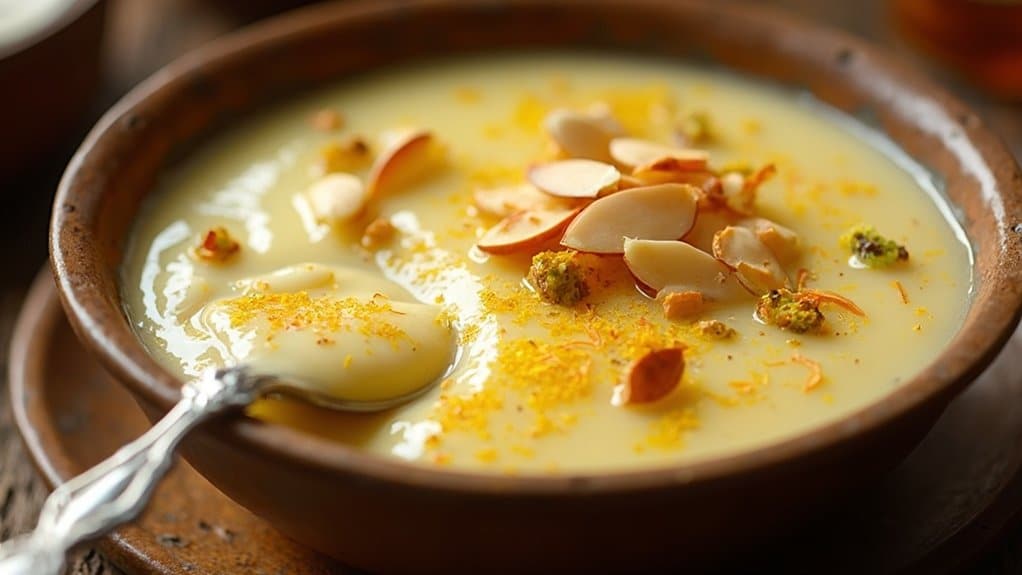
But what if we told you there’s a magical world where your sweet tooth and your glucose levels can be best friends?
Some of us here at The Lunch Pro are all about sticking to the classics, while others are full-on culinary scientists, ready to swap and experiment. We’ve come together to show you how to give those amazing Indian sweets a diabetes-friendly makeover. We’re talking guilt-free treats that are so good, you won’t even notice the difference.
Why You Can Still Enjoy Indian Sweets
First things first, what’s the secret sauce? It’s all about making wise choices. You can transform your favourite desserts by swapping out refined sugar for low-glycemic sweeteners like stevia, monk fruit, or even natural fruits. We also sneak in healthy fats and fiber to help slow down how your body absorbs sugar.
This article is your treasure map to enjoying guilt-free gajar ka halwa, kheer, ladoo, and barfi. We’ll show you how to keep the flavour and lose the sugar spike!
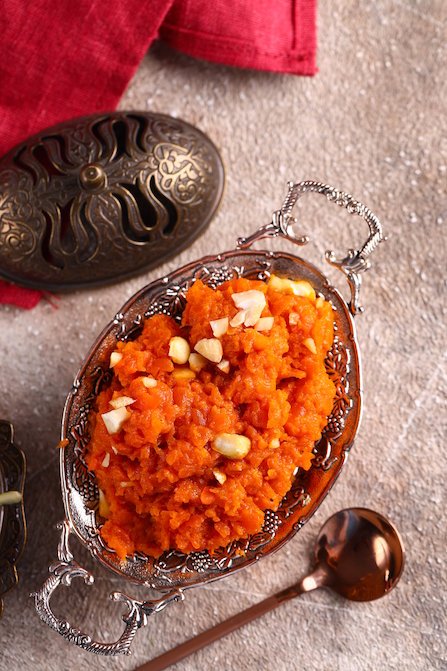
Diabetes-Friendly Gajar Ka Halwa Recipe (Stevia-Sweetened)
Diabetes-Friendly Gajar Ka Halwa
Ingredients
Method
- In a heavy-bottomed pan or a large skillet, melt the ghee over medium heat.
- Add the grated carrots and sauté for about 10-15 minutes, until the carrots are softened and have reduced in volume.
- Pour in the milk and bring to a gentle simmer. Continue cooking and stirring occasionally for 20-25 minutes, or until the milk has been fully absorbed. This step is key to that creamy texture!
- Stir in the cardamom powder, saffron threads, and stevia. Mix well. Taste and adjust the stevia if you want it sweeter.
- Cook for another 2-3 minutes to allow the flavors to meld together.
- Remove from the heat. Garnish with chopped nuts before serving warm.
Nutrition
Notes
Tried this recipe?
Let us know how it was!Picture this: it’s a chilly evening, and you’re craving a bowl of warm, nutty gajar ka halwa. This reimagined recipe lets you have that perfect moment without the worry. The secret? Stevia is a natural, zero-calorie sweetener that won’t mess with your blood sugar.
Gajar Ka Halwa (Carrot Pudding)
This recipe serves 4.
- Prep Time: 15 minutes
- Cook Time: 45 minutes
- Equipment:
- Grater or food processor with grating attachment
- Heavy-bottomed pan or large skillet
- Spatula for stirring
Ingredients
- 2 pounds (about 1 kg) of fresh carrots, grated
- 2 tablespoons of ghee (clarified butter)
- 3/4 cup of whole milk or unsweetened almond milk
- 1/2 teaspoon of cardamom powder
- 1/4 teaspoon of saffron threads
- 10-12 drops of liquid stevia, or to taste
- 1/4 cup of chopped almonds, pistachios, or cashews for garnish
Instructions
- In a heavy-bottomed pan or a large skillet, melt the ghee over medium heat.
- Add the grated carrots and sauté for about 10-15 minutes, until the carrots are softened and have reduced in volume.
- Pour in the milk and bring to a gentle simmer. Continue cooking and stirring occasionally for 20-25 minutes, or until the milk has been fully absorbed. This step is key to that creamy texture!
- Stir in the cardamom powder, saffron threads, and stevia. Mix well. Taste and adjust the stevia if you want it sweeter.
- Cook for another 2-3 minutes to allow the flavors to meld together.
- Remove from the heat. Garnish with chopped nuts before serving warm.
How to Make Low-Sugar Kheer with Quinoa or Oats
Kheer is the ultimate comfort food, a creamy rice pudding that everyone loves. But for our diabetes-conscious friends, that white rice can be a problem. So, our culinary scientist said, “Let’s trade that rice for something even better!”
Low-Sugar Kheer with Quinoa or Oats
Ingredients
Method
- Rinse the quinoa thoroughly in a fine-mesh sieve. Skip this step if you’re using steel-cut oats.
- In a saucepan, combine the quinoa (or oats) and milk. Bring to a boil, then reduce the heat to a low simmer.
- Cook for 20-30 minutes, stirring often, until the quinoa or oats are cooked and the mixture has thickened into a creamy pudding consistency.
- Remove from the heat. Stir in the cardamom, saffron, and your chosen sweetener until fully dissolved.
- Ladle the kheer into bowls and garnish with chopped nuts. Serve warm or chilled.
Nutrition
Notes
Tried this recipe?
Let us know how it was!We’re swapping the rice for quinoa or steel-cut oats. They bring extra fiber and nutrients to the party, which means you get to enjoy that creamy goodness with a much gentler impact on your blood sugar.
Low-Glycemic Kheer
This recipe serves 4.
- Prep Time: 5 minutes
- Cook Time: 25-35 minutes
- Equipment:
- Fine-mesh sieve (for quinoa)
- Saucepan
- Spoon or whisk for stirring
Ingredients
- 1/4 cup of quinoa or steel-cut oats
- 3 cups of whole milk or unsweetened almond milk
- 1/2 teaspoon of cardamom powder
- A pinch of saffron threads (optional)
- 1/4 cup of chopped almonds or pistachios for garnish
- Sweetener of your choice: stevia, monk fruit, or erythritol to taste
Instructions
- Rinse the quinoa thoroughly in a fine-mesh sieve. Skip this step if you’re using steel-cut oats.
- In a saucepan, combine the quinoa (or oats) and milk. Bring to a boil, then reduce the heat to a low simmer.
- Cook for 20-30 minutes, stirring often, until the quinoa or oats are cooked and the mixture has thickened into a creamy pudding consistency.
- Remove from the heat. Stir in the cardamom, saffron, and your chosen sweetener until fully dissolved.
- Ladle the kheer into bowls and garnish with chopped nuts. Serve warm or chilled.
Diabetic-Friendly Nut Barfi Recipes: A Trio of Guilt-Free Treats!
Nuts aren’t just for snacking! They make an incredible, diabetes-friendly base for classic Indian sweets like barfi. Loaded with healthy fats and protein, they help to slow down sugar absorption, meaning you can enjoy these treats without the dreaded glucose spike. We’re going to give you three delicious, easy-to-make recipes that turn these wholesome ingredients into something truly special.
Almond Barfi (Badam Barfi)
This classic almond barfi recipe is a game-changer. It’s rich, fragrant with cardamom, and has a lovely texture. We’re skipping the sugar syrup and using a low-glycemic sweetener to keep it healthy.
Almond Barfi
Ingredients
Equipment
- Non-stick pan
- Spoon or spatula
- Rolling Pin
- Sharp Knife
Method
- Roast the Flour: In a non-stick pan over low heat, gently roast the almond flour for about 5-7 minutes. Stir continuously until it becomes fragrant and turns a light golden color. Be careful not to burn it! This step enhances the nutty flavor.
- Make the Dough: Remove the pan from the heat. In a small bowl, combine the almond milk, ghee, cardamom, and stevia. Mix well.
- Combine & Knead: Add the wet mixture to the roasted almond flour. Mix with a spoon until a crumbly dough forms. If it feels too dry, you can add a tiny bit more almond milk, a teaspoon at a time.
- Shape the Barfi: Transfer the warm dough onto a piece of parchment paper. Knead it gently with your hands to form a smooth ball. Place another piece of parchment paper on top and use a rolling pin to flatten it to about 1/2 inch thick.
- Garnish & Set: Sprinkle the sliced nuts on top and gently press them into the barfi. Let the barfi cool completely at room temperature, which will take about 30 minutes to an hour.
- Cut and Serve: Once firm, use a sharp knife to cut the barfi into squares or diamonds.
Nutrition
Notes
Tried this recipe?
Let us know how it was!Almond Barfi
This recipe makes about 10 small barfi squares.
- Prep Time: 10 minutes
- Cook Time: 10 minutes
- Equipment:
- Non-stick pan
- Spoon or spatula
- Parchment paper
- Rolling pin
- Sharp knife
Ingredients
- 1 cup (100 g) of fine almond flour
- 3 tablespoons of unsweetened almond milk
- 1 tablespoon of ghee or coconut oil
- 1/2 teaspoon of cardamom powder
- 10-12 drops of liquid stevia, or to taste
- Sliced almonds or pistachios for garnish
Instructions
- Roast the Flour: In a non-stick pan over low heat, gently roast the almond flour for about 5-7 minutes. Stir continuously until it becomes fragrant and turns a light golden color. Be careful not to burn it! This step enhances the nutty flavor.
- Make the Dough: Remove the pan from the heat. In a small bowl, combine the almond milk, ghee, cardamom, and stevia. Mix well.
- Combine & Knead: Add the wet mixture to the roasted almond flour. Mix with a spoon until a crumbly dough forms. If it feels too dry, you can add a tiny bit more almond milk, a teaspoon at a time.
- Shape the Barfi: Transfer the warm dough onto a piece of parchment paper. Knead it gently with your hands to form a smooth ball. Place another piece of parchment paper on top and use a rolling pin to flatten it to about 1/2 inch thick.
- Garnish & Set: Sprinkle the sliced nuts on top and gently press them into the barfi. Let the barfi cool completely at room temperature, which will take about 30 minutes to an hour.
- Cut and Serve: Once firm, use a sharp knife to cut the barfi into squares or diamonds.
Pistachio Barfi (Pista Barfi)
Pistachios bring a beautiful green color and a unique, slightly buttery flavor to this barfi. This recipe uses a mix of pistachio flour and a low-sugar sweetener for a truly decadent yet healthy treat.
Pistachio Barfi
Ingredients
- 1 cup 100 g of raw pistachios, ground into a fine flour
- 1/4 cup of unsweetened milk powder
- 1/4 cup of whole milk or unsweetened almond milk
- 2 tablespoons of ghee or unsalted butter
- 1/2 teaspoon of cardamom powder
- Liquid stevia monk fruit, or erythritol to taste
- A few drops of green food coloring optional
- Chopped pistachios for garnish
Equipment
- Non-stick pan
- Spatula for stirring
- Parchment-lined tray
Method
- Prepare the Pistachio Flour: In a food processor, pulse the raw, shelled pistachios until they form a fine powder. Be careful not to over-process, or it will turn into a paste!
- Cook the Base: In a non-stick pan over low heat, add the ghee, milk, and your chosen sweetener. Stir until the sweetener has dissolved.
- Mix the Dry Ingredients: In a separate bowl, combine the pistachio flour and milk powder.
- Combine & Cook: Slowly add the dry ingredients to the wet mixture in the pan, stirring constantly to avoid lumps. Continue to cook on low heat, stirring continuously for about 5-7 minutes, until the mixture starts to come together and leave the sides of the pan. You’re looking for a thick, dough-like consistency.
- Shape & Garnish: Transfer the hot mixture onto a parchment-lined tray. Press it down with a spatula or the back of a spoon to create a flat, even layer. Sprinkle with chopped pistachios and gently press them into the surface.
- Cool & Slice: Let the barfi cool completely to room temperature before cutting into your desired shapes.
Nutrition
Notes
Tried this recipe?
Let us know how it was!Pistachio Barfi
This recipe makes about 12 small barfi.
- Prep Time: 10 minutes
- Cook Time: 10 minutes
- Equipment:
- Food processor
- Non-stick pan
- Spatula for stirring
- Parchment-lined tray
Ingredients
- 1 cup (100 g) of raw pistachios, ground into a fine flour
- 1/4 cup of unsweetened milk powder
- 1/4 cup of whole milk or unsweetened almond milk
- 2 tablespoons of ghee or unsalted butter
- 1/2 teaspoon of cardamom powder
- Liquid stevia, monk fruit, or erythritol to taste
- A few drops of green food coloring (optional)
- Chopped pistachios for garnish
Instructions
- Prepare the Pistachio Flour: In a food processor, pulse the raw, shelled pistachios until they form a fine powder. Be careful not to over-process, or it will turn into a paste!
- Cook the Base: In a non-stick pan over low heat, add the ghee, milk, and your chosen sweetener. Stir until the sweetener has dissolved.
- Mix the Dry Ingredients: In a separate bowl, combine the pistachio flour and milk powder.
- Combine & Cook: Slowly add the dry ingredients to the wet mixture in the pan, stirring constantly to avoid lumps. Continue to cook on low heat, stirring continuously for about 5-7 minutes, until the mixture starts to come together and leave the sides of the pan. You’re looking for a thick, dough-like consistency.
- Shape & Garnish: Transfer the hot mixture onto a parchment-lined tray. Press it down with a spatula or the back of a spoon to create a flat, even layer. Sprinkle with chopped pistachios and gently press them into the surface.
- Cool & Slice: Let the barfi cool completely to room temperature before cutting into your desired shapes.
Walnut Barfi (Akhrot Barfi)
Walnut barfi is a rich source of Omega-3s and antioxidants, making it a fantastic treat for your body and your taste buds. We’ll sweeten this version with date paste to make a naturally guilt-free indulgence.
Walnut Barfi
Ingredients
Method
- Roast the Walnuts: Toast the walnuts in a dry pan over medium heat for about 5 minutes, until fragrant. Let them cool, then chop them coarsely.
- Create the Base: In a non-stick pan over low heat, melt the ghee. Add the date paste and stir until it becomes soft and pliable.
- Mix It All: Add the roasted walnuts, milk powder, cardamom, and cinnamon to the pan. Mix well until all the ingredients are thoroughly combined and the mixture forms a thick dough. This will take about 3-5 minutes.
- Shape and Set: Press the warm dough into a parchment-lined pan. Press down firmly to create a smooth, even surface. Garnish with walnut halves.
- Cool and Serve: Let the barfi cool completely at room temperature, then cut into pieces and enjoy!
Nutrition
Notes
Tried this recipe?
Let us know how it was!Walnut Barfi
This recipe makes about 10 small barfi.
- Prep Time: 10 minutes
- Cook Time: 10 minutes
- Equipment:
- Non-stick pan
- Spatula or spoon
- Parchment-lined pan or tray
Ingredients
- 1 cup (100 g) of walnuts
- 1/4 cup (60 g) of date paste (made from softened, pitted dates)
- 2 tablespoons of ghee or coconut oil
- 1/2 cup of milk powder or khoya (dried milk solids)
- 1/2 teaspoon of cardamom powder
- A pinch of cinnamon (optional)
- Walnuts, halved, for garnish
Instructions
- Roast the Walnuts: Toast the walnuts in a dry pan over medium heat for about 5 minutes, until fragrant. Let them cool, then chop them coarsely.
- Create the Base: In a non-stick pan over low heat, melt the ghee. Add the date paste and stir until it becomes soft and pliable.
- Mix It All: Add the roasted walnuts, milk powder, cardamom, and cinnamon to the pan. Mix well until all the ingredients are thoroughly combined and the mixture forms a thick dough. This will take about 3-5 minutes.
- Shape and Set: Press the warm dough into a parchment-lined pan. Press down firmly to create a smooth, even surface. Garnish with walnut halves.
- Cool and Serve: Let the barfi cool completely at room temperature, then cut into pieces and enjoy!
Clever Cooking Techniques for Low-Glycemic Indian Desserts
Ready to be a dessert ninja? These simple tricks can make a huge difference, whether you’re whipping up a halwa or a ladoo.
- Go Non-Stick: Using a good non-stick pan means you can use less ghee or oil, which keeps things lighter.
- The Power of Portion Control: Think mini-molds or smaller serving dishes. A small, perfect bite is just as satisfying as a giant spoonful.
- Slow & Steady Wins the Race: Cooking on a low heat for longer allows flavours to deepen and concentrate naturally, so you don’t need to add as much sweetener.
- Embrace Natural Sweeteners: Don’t just rely on stevia. Try using mashed ripe bananas or date paste. They add natural sweetness, fiber, and an incredible texture.
Enjoy Your Guilt-Free Indian Sweets!
🎉 Ready to impress your family and friends with these genius dessert makeovers? Save this article to your Pinterest and share it with anyone who loves a good sweet treat! Discover how to make your favourite Indian sweets without compromising on flavour or health.
For more healthy Indian recipes, check out our other articles on Low-Calorie Indian Dishes and Healthy Indian Snacks.
We hope you enjoy these fantastic, diabetes-friendly barfi recipes. Which one will you try first? Let us know in the comments below!
Choosing the Best Low-Glycemic Sweeteners for Indian Desserts
When managing diabetes, understanding the glycemic index of sweeteners becomes a critical first step in creating desserts that won’t spike blood sugar levels.
Traditional sweeteners in Indian cuisine vary widely in their glycemic impact, offering clever alternatives to refined sugar.
Jaggery (gur), for instance, has a moderate glycemic index of around 65, making it somewhat better than white sugar’s 70. While not low enough for liberal use, it brings minerals and depth of flavor that refined sugar lacks.
Trading refined sugar for jaggery offers modest glycemic benefits plus nutritional minerals and complex flavor profiles.
Date paste provides natural sweetness with fiber that slows sugar absorption. Many grandmothers knew this intuitively, substituting dates in halwa recipes long before glycemic index became mainstream vocabulary.
For truly diabetes-friendly options, stevia and monk fruit extracts blend beautifully with Indian flavors like cardamom and saffron.
.
Fruit-Sweetened Mithai – Natural Sweetness for Healthier Desserts
Using fruits as natural sweeteners provides a healthier alternative to processed sugars. Here are some ideas:
Banana Ladoo: Use mashed ripe bananas to bind roasted gram flour. These fruit alternatives provide essential nutrients alongside sweetness, making mithai more than just a treat.
Mango Shrikhand: Using ripe mangoes reduces added sugar.
Date-Sweetened Kheer: Combine rice or vermicelli with date paste for sweetness.
Apple Gajar Halwa: Combine grated apples and carrots for natural sweetness.
They transform traditional desserts into mindful indulgences that honor cultural heritage while supporting blood sugar management.
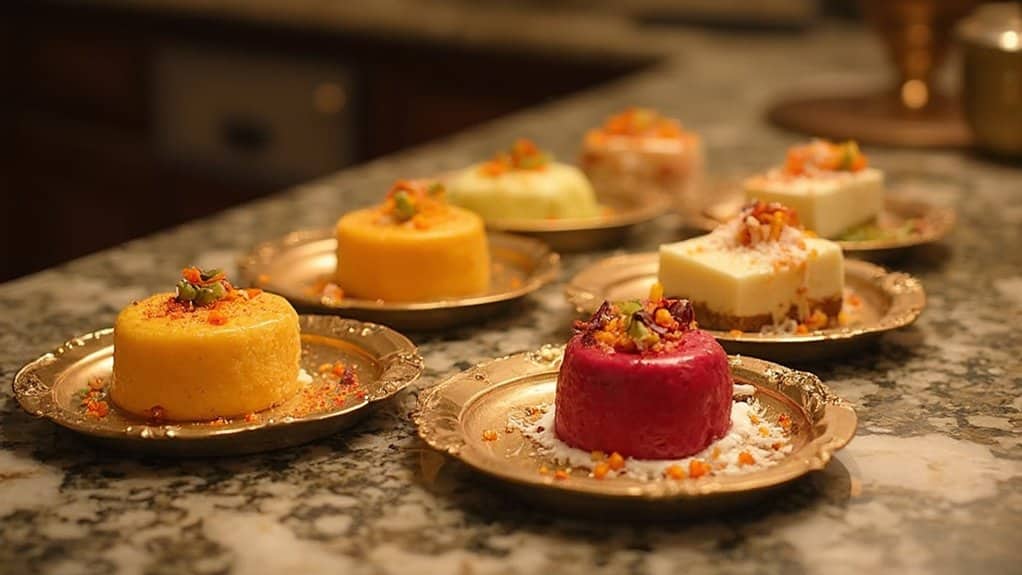
To further lower the glycemic index of your favourite sweets, try these techniques:
Non-Stick Pans: Reduce the need for added fats.
Steam-Cooking: Reduces fat and carbohydrate absorption.
Portion Control: Use mini-molds for smaller servings.
Slow-Cooking: Concentrates flavours, allowing for reduced sweetener use.
Call-To-Action: Enjoy Guilt-Free Indian Sweets!
🎉 Want more healthy dessert ideas? Save this article on Pinterest and share it with friends! Discover how to make your favourite Indian sweets without compromising on flavour or health. For more healthy Indian recipes, check out our articles on Low-Calorie Indian Dishes and Healthy Indian Snacks.
Diabetes-Friendly Indian Desserts Q&A
Can Diabetics Consume Desserts During Religious Festivals and Celebrations?
Diabetics can enjoy festive celebrations with thoughtful sweet alternatives.
Religious occasions don’t have to mean complete dessert deprivation.
Practicing festive moderation allows participation in traditional customs while maintaining health.
Sugar-free or low-carb versions of classic treats offer satisfying options.
The key is balance—perhaps enjoying a small portion of a special dessert alongside healthier choices.
How Often Can Diabetics Include These Modified Sweets in Their Diet?
Studies show that 82% of diabetics feel socially excluded during celebrations involving sweets.
Diabetics can enjoy modified desserts 1-2 times per week with proper portion control. A small serving (about two tablespoons) minimizes blood sugar spikes while satisfying cravings.
Do Diabetes-Friendly Desserts Affect Medication Timing or Dosage?
Diabetes-friendly desserts can indeed influence medication timing and dosage adjustments.
Even modified treats affect blood sugar levels, which may require healthcare providers to recalibrate insulin or oral medication schedules.
The carbohydrate content in these desserts should be factored into the patient’s overall carb counting and medication routine.
Many individuals find that taking medication shortly before eating these treats helps manage post-meal glucose spikes effectively.
Always consult a healthcare provider about specific medication interactions before making dietary changes.
Will These Dessert Alternatives Help With Weight Management Too?
These dessert alternatives offer dual benefits, like finding treasure in an ordinary garden. They typically contain fewer calories and healthier ingredients than traditional sweets, supporting weight loss goals when enjoyed mindfully.
Portion control remains essential. Even diabetes-friendly treats contribute calories, so moderation is key.
Many people find these alternatives satisfying in smaller amounts, making it easier to maintain a healthy weight while still enjoying occasional sweet indulgences.
Are These Modified Desserts Safe for Gestational Diabetes Patients?
Individuals with gestational diabetes should consult healthcare providers before trying these modified recipes.
While designed to be lower in sugar and use diabetes-friendly ingredients, it is essential to note that pregnancy requires personalized nutritional guidance.
These desserts may be incorporated into a medically-approved meal plan in appropriate portions.
The natural sweeteners and whole grains in these recipes offer gentler blood sugar impacts than traditional versions, but every pregnancy is unique and requires customized care.
Concluding Our Look at Diabetes-Friendly Traditional Indian Desserts
Like Cinderella’s transformation at midnight, traditional Indian desserts can undergo their own magical makeover for diabetic enjoyment. By embracing natural sweeteners, mindful portions, and clever substitutions, the symphony of flavors that defines Indian mithai remains accessible. The journey through diabetes-friendly desserts isn’t about sacrifice—it’s about rediscovery. Your sweet tooth and your glucose monitor can finally dance in harmony.


